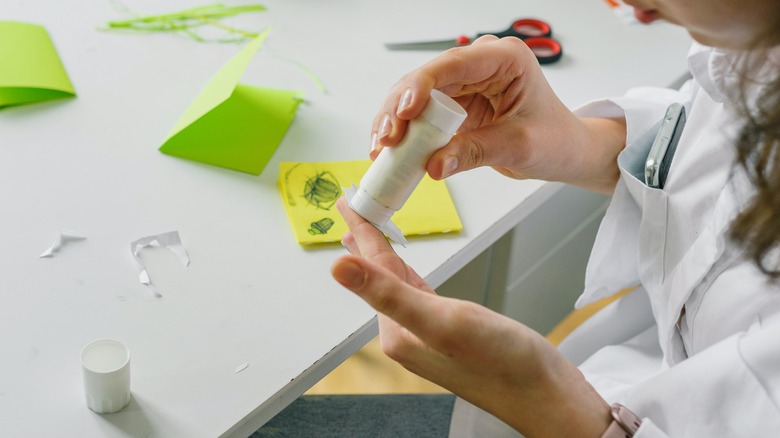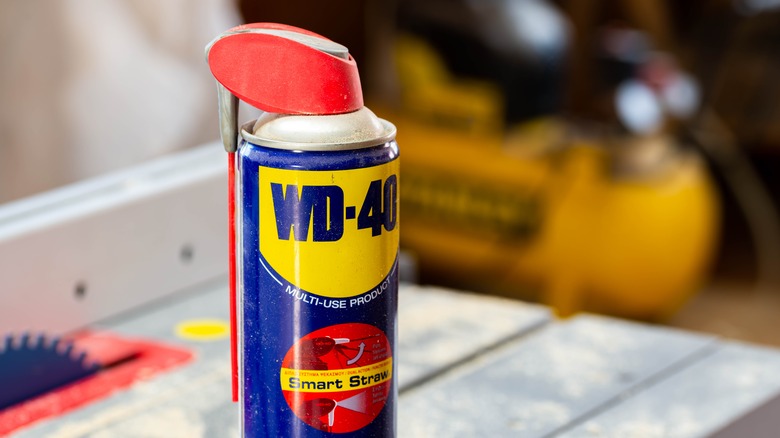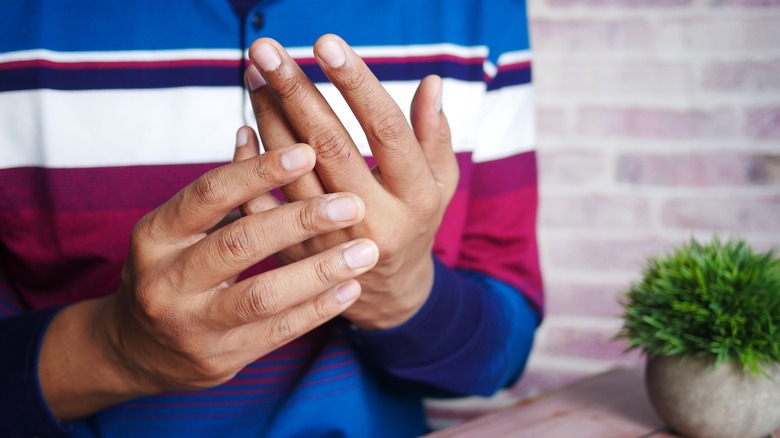Instead Of Panicking When You Have Glue On Your Skin, Reach For A Can Of WD-40
We've all been there: A small piece of a knick-knack or decorative accent breaks off, and we head to the junk drawer to get some trusty super glue. You don't want to waste any time since small tasks like these have a habit of falling to the wayside when not done immediately. But because you're in a hurry, you don't put on any protective gloves and get some glue on your fingers. You can't rub it off like normal craft glue, which means your fingers are either stuck together, or you have residue that is painful to pick off. Well, as far as super glue removal hacks go, WD-40 can help with that.
If this scenario sounds familiar to you, then you know simple soap and water won't do the trick. You can scrub all you want, but the super glue won't budge. Or if it does, that means you've probably scrubbed harder than you'd prefer. Rather than putting yourself through a painful scenario, grab a bottle of WD-40 from the garage and fix your problem with a simple spritz.
How to remove super glue with WD-40
To remove your rogue drops of super glue, all you need to do is grab your can. Before applying it to your skin, make sure you shake it well, especially if it has been sitting on the shelf for a while. This mixes the solvents and added ingredients together, ensuring the formula works as intended.
Then, simply aim it at the dried glue and give it a minute to penetrate the adhesive. Once it does, rub your fingers or hands together to add tension as it unsticks. One blast of the lubricant should be enough, but you don't want to force it. Add another spritz if you still feel some resistance and the glue isn't dissolving. This way, you ensure you don't create skin abrasions.
For those with sensitive skin, spray the product onto a cotton swab instead of directly on your skin. This can prevent skin irritations by only applying the product where it is directly needed. However, whether you have sensitive skin or not, make sure to wash your hands immediately after. WD-40 warns that you should avoid long-term skin exposure, or you risk irritation. So make sure to thoroughly rinse off the formula once the glue dissolves.
Why this works
Not many people think "glue dissolver" when they think of WD-40, but they shouldn't be surprised. WD-40's main purpose is to be a lubricant specializing in repelling water. That's why it's used to coat hinges and metal tools since it displaces moisture and prevents rust from setting in. But those same properties also help dissolve glue. Its lubricating agents get underneath the glue bond, helping to loosen the adhesive. They separate it from whatever surface it's sitting on; in this case, that's your skin. This helps break it apart, allowing you to easily wipe it away.
However, since WD-40 also contains various solvents such as mineral spirits, you also want to limit contact with your skin. Rather than spraying liberally all over the area, try to target it using the specialized nozzle so it just hits the parts with glue. According to the American College of Toxicology, mineral spirits are known to create moderate skin irritation, so it's best to be targeted with your spray. As mentioned above, make sure to wash your hands thoroughly afterward to remove any lingering product residue.


